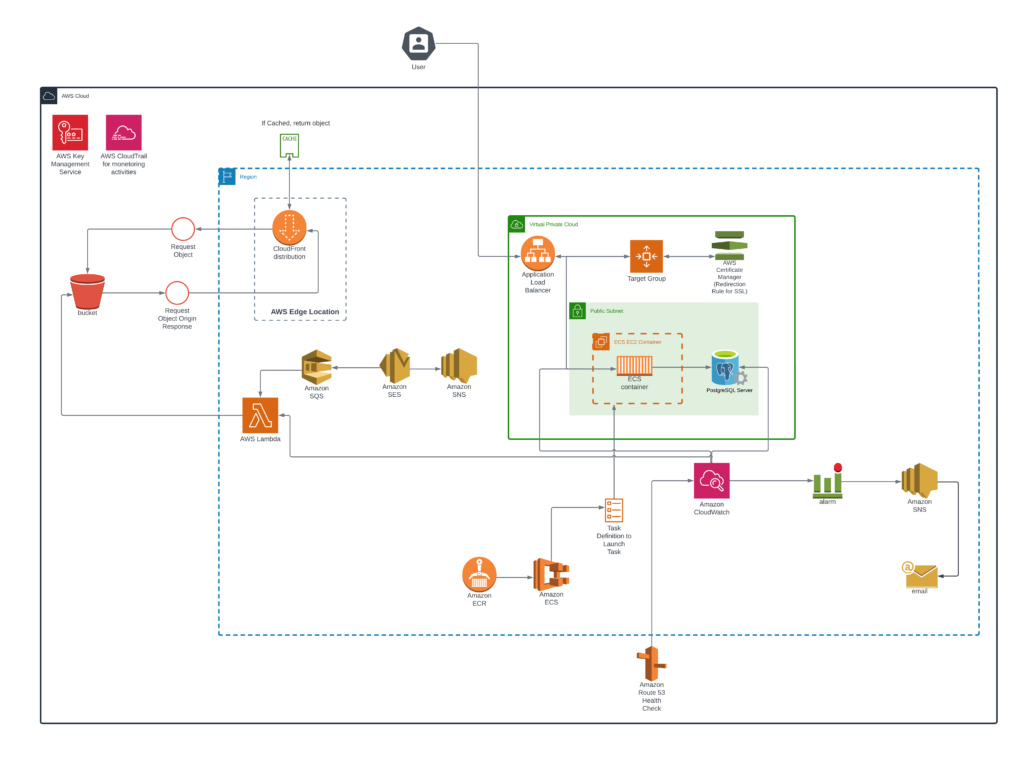MediaCentric: An app that helps streamline the on-field work
Category: Audio Visual/SaaS
Services: Managed Engineering Teams, DevOps, Cloud Architecture Design, and Review
Category: Audio Visual/SaaS
Services: Managed Engineering Teams, DevOps, Cloud Architecture Design, and Review

The client, a leading U.S. full-service organization in the AV/IT industry, needed a robust SaaS solution to efficiently manage their field workers and track their tasks. With our expertise in building secure and scalable SaaS platforms, we proposed a solution that included multi-tenancy support, ensuring that the client could easily manage multiple customers on a single platform.
Streamlining Field Worker Tracking for Enhanced Efficiency:
As a small and medium business in the AV/IT industry, the client struggled with an inefficient and manual paper-based system for tracking field worker activities. This process led to delays, errors, and reduced productivity. A more streamlined approach was necessary to improve efficiency and optimize resource utilization.
Improving Reliability and Workload Management:
The existing system placed excessive workloads on field workers, resulting in low reliability and suboptimal performance. As a SMB, it was crucial for the client to ensure reliable service delivery to meet customer demands. Enhancing workload management and improving the overall reliability of field operations were key objectives.
Cost-Effective Processes to Maximize Productivity:
Manual processes consumed significant man-hours and incurred unnecessary costs for the client. Optimizing productivity and cost-effectiveness were critical since our client was an SMB. Implementing automated and efficient processes would help eliminate manual errors, reduce costs, and maximize resource utilization.
Efficient Management of Email Bounce/Complaints for Reliable Communication:
The client faced challenges in managing email bounce and complaint issues, impacting their communication capabilities. As a SMB, maintaining reliable email communication was essential for client engagement and business growth. Implementing a more efficient system to track and manage email bounce/complaints was necessary to ensure smooth communication channels.
Ensuring Infrastructure Stability and Production Monitoring:
Intermittent issues with containers abruptly stopping in production affected the client’s operations and caused disruptions. For our SMB client, maintaining a stable infrastructure and proactively monitoring production URLs were crucial to minimize downtime, ensure business continuity, and enhance customer satisfaction.
Robust Security Measures for Multi-Tenant System:
As a SMB managing a multi-tenant system, the client emphasized the need for robust security measures. Protecting sensitive data and ensuring compliance with data privacy regulations were critical. Implementing encrypted data at rest and in transit would bolster security and instill trust among their clients within the multi-tenant environment.
Streamlined Field Worker Management for Enhanced Efficiency:
Our solution was specifically designed to help small and medium businesses efficiently manage their field workers. By eliminating communication errors and enabling instant reporting without paperwork, we streamlined the workflow. This solution significantly reduced data loss, eliminated duplicate entries, and saved businesses valuable time.
Frictionless Adoption for SMBs:
Understanding the challenges of adopting a new system, we focused on creating an easy-to-use interface tailored to the needs of SMBs. With simple point-and-click tasks and seamless integration with popular third-party tools like Zapier, Suites, and Salesforce, we ensured a smooth transition. This minimized the learning curve and enabled businesses to quickly leverage the benefits of the new system.
High Availability Infrastructure for Uninterrupted Operations:
Our architecture, built on reliable AWS services, provided SMBs with a highly scalable and available infrastructure. This design ensured that the system could handle peak workloads without disruptions. By prioritizing high availability, we enabled businesses to operate seamlessly and deliver consistent services to their clients.
Bounce Report Generation for Improved Visibility:
Understanding the importance of email communication, we developed an integrated system using AWS Lambda, SNS, and SQS. This innovative solution generated detailed bounce reports, allowing SMBs to gain insights into email delivery issues. The enhanced visibility empowered businesses to promptly address any errors and ensure reliable communication channels.
Resolved Container Abruptly Stopping Issue:
To address the issue of containers abruptly stopping, our team migrated the containers to the managed service Amazon ECS. This migration ensured that if a running container stops, ECS automatically spawns a new container, maintaining the stability and continuity of operations. This solution provided SMBs with a reliable and uninterrupted container environment.
Easy-to-Monitor Infrastructure
We implemented a comprehensive monitoring infrastructure for SMBs. Route 53 Health Check played a crucial role in notifying and providing alarms for production URLs. By using AWS CloudWatch, we monitored metrics and stored logs for various AWS services used in the project. This approach enabled businesses to proactively identify and resolve issues, reducing downtime and improving reliability.
Highly Secure Multi-Tenant System
Security was paramount in our solution design. For the database, we utilized Amazon RDS, a highly secure and reliable cloud-based service that ensures data encryption at rest and in transit. This safeguarded the sensitive information of SMBs and their customers. Additionally, we implemented AWS IAM for user authentication and authorization, guaranteeing that only authorized users could access the system. This multi-layered security approach provided peace of mind and compliance for businesses in safeguarding their valuable data.
